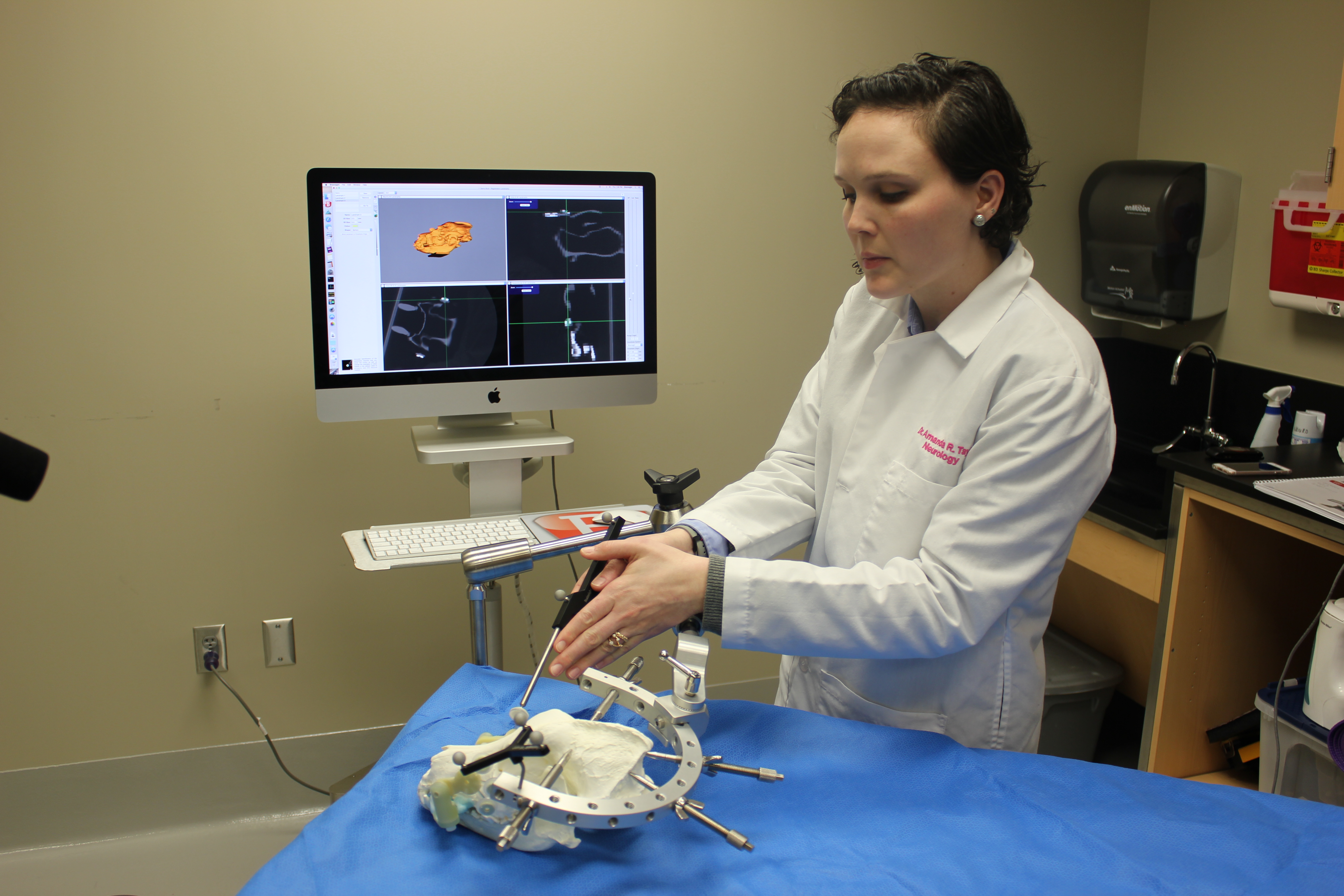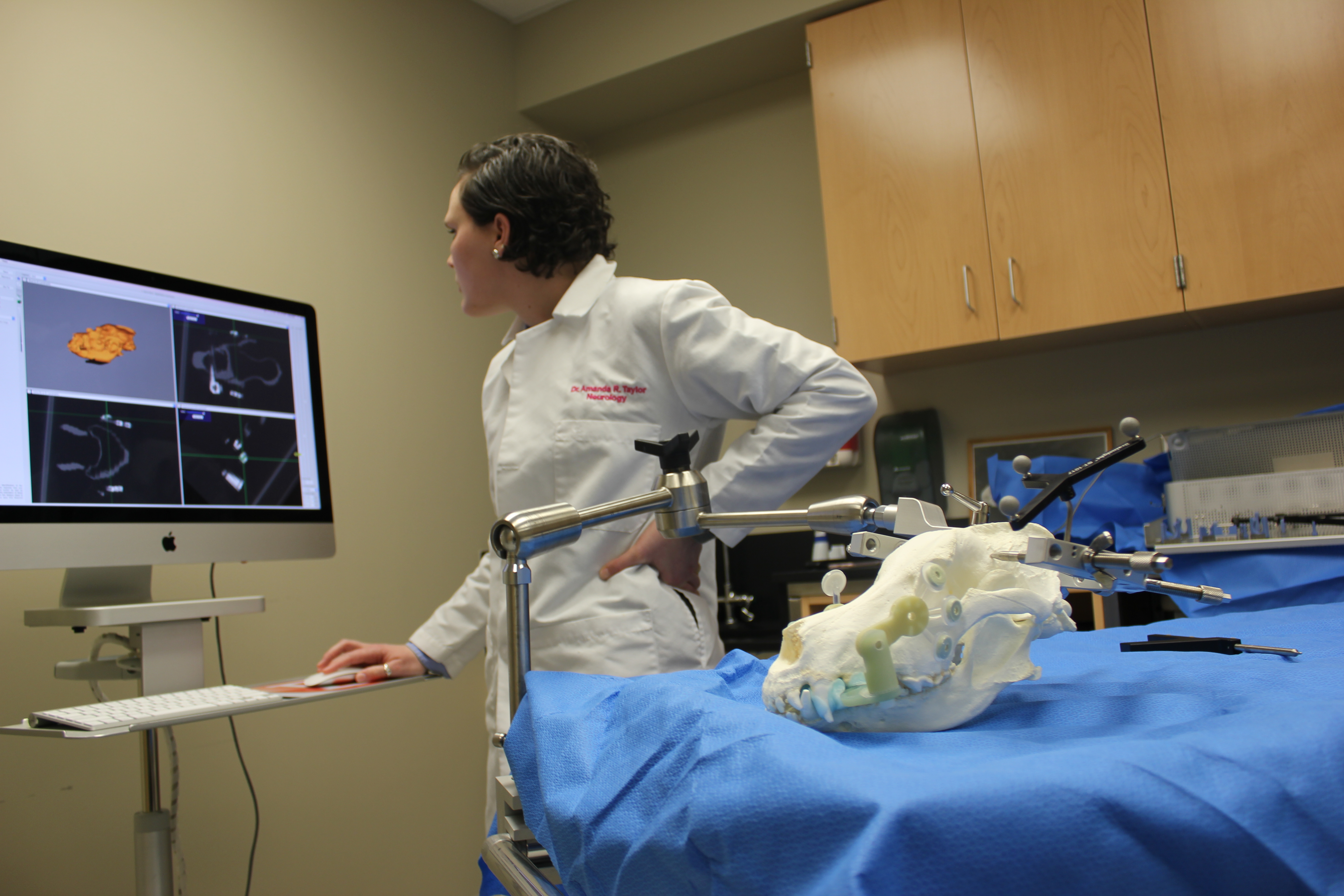Neurology and Neurosurgery Service Offering Stereotactic Surgery

The Neurology and Neurosurgery Service in the Bailey Small Animal Teaching Hospital at Auburn University’s College of Veterinary Medicine is offering stereotactic surgery to treat animals with brain disease, one of the few veterinary teaching hospitals to do so.
Dr. Amanda Taylor, an assistant professor in the Department of Clinical Sciences and clinician of the Neurology and
Neurosurgery Service, says the technology is indispensable for faculty in the teaching hospital because it allows them to achieve a level of precision that previously wasn’t possible.
“In the past, diseases of the brain have been diagnosed in pets by looking at all available information, but even when the answer is clear, veterinarians cannot always know how quickly an animal’s tumor will grow or make them sick,” Dr. Taylor said. “Stereotactic surgery is a new option that can help veterinarians and owners decide the best course for their pet.”
Stereotactic surgery is a computer guided method to conduct surgery with precision. It works by taking an MRI or CT of the patient and transferring the image to a computer program, Brainsight®, which generates a three-dimensional model of that image.
Using landmarks, or particular points of the patient’s affected anatomy as reference, clinicians can ‘paint’ the particular areas they are targeting for surgery. With a combination of digital imaging and a hand-held pointer, clinicians can see precisely where they need to make an incision to remove a tumor or address another issue.

“Previously with brain surgery, if the lesion or brain disease was small, we wouldn’t be able to access it without interfering with the rest of the brain,” Dr. Taylor said. “With this system, I can pinpoint something as small as two millimeters and go straight at it.”
Using this process, surgeons are able to operate to the millimeter level of accuracy, ensuring that healthy tissue is preserved while treating the patient.
“One of the things that makes the software we use unique is that it was designed with veterinary patients in mind,” Dr. Taylor said. “Similar systems on the market are designed for human patients, and have to be adapted, but this is made for us right out of the box.”
To learn more about stereotactic surgery, and view a video overview, click here.
To view the Neurology and Neurosurgery webpage, click here.
